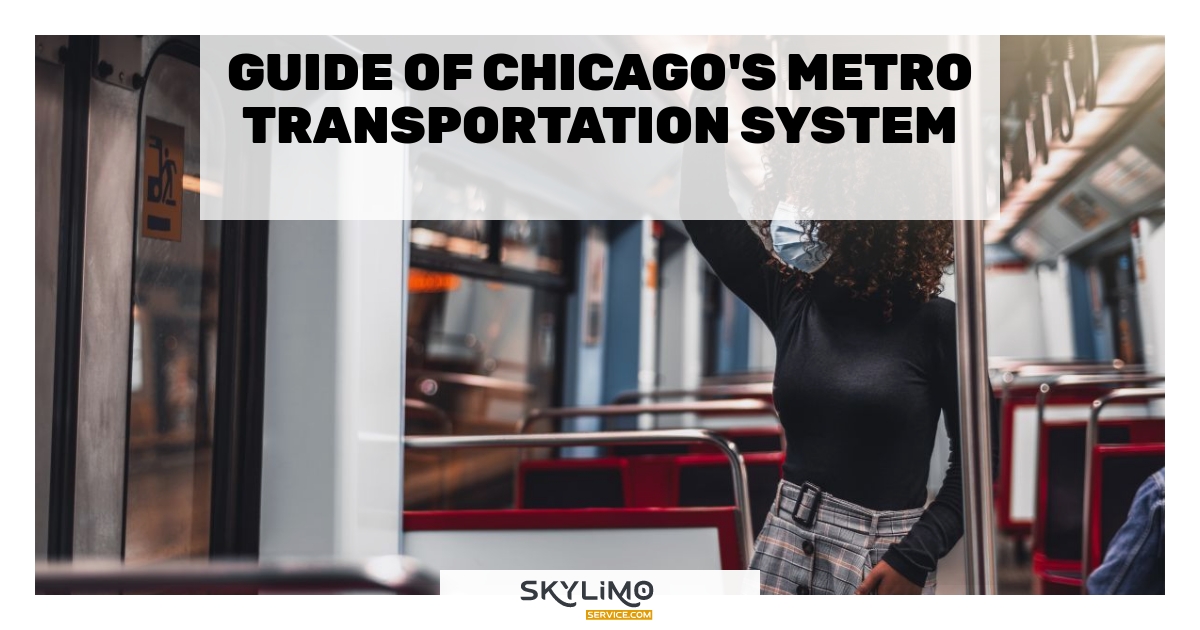Chicago is a bustling city with a population of over 2.7 million people. With so many people living and working in the city, it’s no surprise that the transportation system is a crucial part of daily life. The Chicago Transit Authority (CTA) operates the city’s public transportation system, which includes buses and trains. In this article, we’ll provide a comprehensive guide to Chicago’s metro transportation system, including how to navigate the system, the different types of transportation available, and tips for getting around the city.
Getting Started with Chicago’s Metro Transportation System
Before you start using Chicago’s metro transportation system, it’s important to understand the basics. The CTA operates two types of transportation: buses and trains. The train system is called the “L,” short for “elevated,” and it consists of eight different lines that cover the city and surrounding suburbs. The bus system is extensive, with over 100 different routes that cover the city and suburbs.
To use the CTA, you’ll need to purchase a fare card, which is called a Ventra card. You can purchase a Ventra card at any CTA station or online. Once you have a card, you can add value to it and use it to pay for rides on buses and trains. You can also use the Ventra app on your smartphone to purchase and manage your fare card.
Navigating the Chicago’s Metro Transportation System
Navigating Chicago’s metro transportation system can be overwhelming at first, but with a little practice, it becomes second nature. The first step is to familiarize yourself with the different train lines and bus routes. The CTA website has a trip planner tool that can help you find the best route to your destination. You can also use Google Maps or other navigation apps to plan your trip.
When riding the train, it’s important to pay attention to the signs and announcements. Each train line has a different color, and the signs and maps at each station will indicate which line you need to take. Trains run frequently, with some lines running 24 hours a day. During peak hours, trains can be crowded, so be prepared to stand.
When riding the bus, it’s important to know the route number and direction. Buses have digital signs that display the route number and destination, as well as announcements that indicate the next stop. You can also use the CTA Bus Tracker app to track the location of your bus in real-time.
Types of Metro Transportation System
Chicago’s metro transportation system offers several different types of transportation, including trains, buses, and the Metra commuter rail system. The Metra system operates 11 different lines that cover the city and suburbs, and it’s a popular option for commuters who live outside the city.
In addition to public transportation, Chicago also has a thriving taxi and ride-sharing industry. Taxis are available throughout the city, and ride-sharing services like Uber and Lyft are popular options for getting around.
Tips for Getting Around
Navigating Chicago’s metro transportation system can be challenging, but there are several tips that can make it easier. Here are a few:
– Plan ahead: Use the CTA website or a navigation app to plan your trip ahead of time.
– Be prepared: Bring a map, a charged smartphone, and a Ventra card with enough value to cover your trip.
– Avoid peak hours: If possible, avoid riding during peak hours when trains and buses are crowded.
– Be aware of your surroundings: Pay attention to your surroundings and keep your belongings close to you.
– Stay safe: Use common sense and be aware of your surroundings, especially when riding at night.
FAQ
Q: How much does it cost to ride the CTA?
A: The cost of a ride on the CTA varies depending on the type of transportation and the distance traveled. A single ride on the train or bus costs $2.50, and a 30-day unlimited ride pass costs $105.
Q: Can I use my Ventra card on the Metra?
A: No, the Ventra card is only valid on the CTA buses and trains. You’ll need to purchase a separate ticket to ride the Metra.
Q: Are there discounts available for students or seniors?
A: Yes, the CTA offers discounted fares for students and seniors. Students can purchase a reduced fare Ventra card, and seniors can ride for free with a valid ID.
Q: Is the CTA accessible for people with disabilities?
A: Yes, the CTA is accessible for people with disabilities. All buses and trains are equipped with wheelchair ramps, and there are designated seating areas for people with disabilities.
Q: Can I bring my bike on the train or bus?
A: Yes, you can bring your bike on the train or bus, but there are some restrictions. Bikes are not allowed on trains during peak hours, and there are limits to the number of bikes allowed on buses.
Conclusion
Chicago’s metro transportation system is a vital part of daily life in the city. With a little practice and preparation, navigating the system can be easy and convenient. Whether you’re a resident or a visitor, the CTA offers a variety of transportation options that can help you get around the city quickly and efficiently. So next time you’re in Chicago, be sure to take advantage of the city’s public transportation system and explore all that the city has to offer.
Read more: How to Get Around Chicago: A Guide to Public Transportation
Testimonial
“I recently used an informational transportation site to plan my trip to Chicago, and I was blown away by the quality of information available. The site provided detailed information on the different types of transportation available, as well as tips for getting around the city. Thanks to the site, I was able to navigate the CTA with ease and explore all that Chicago has to offer. I highly recommend this site to anyone planning a trip to Chicago.” – John Smith, Chicago Visitor.

